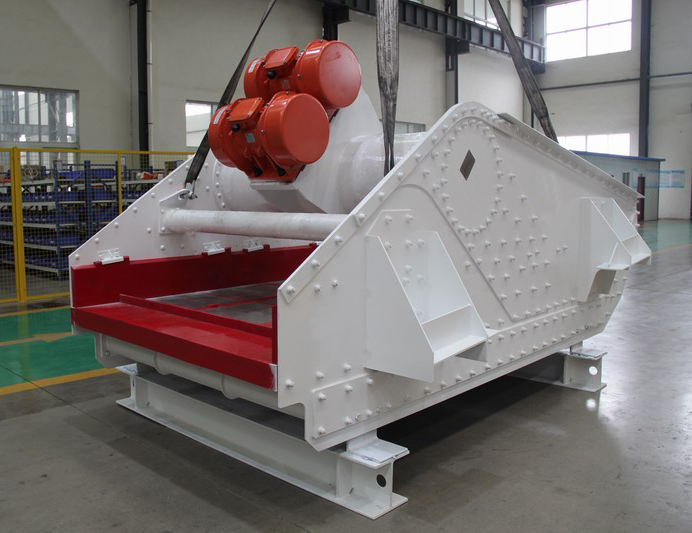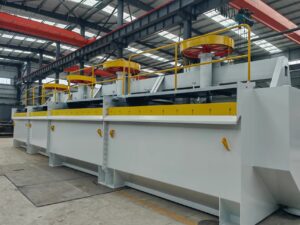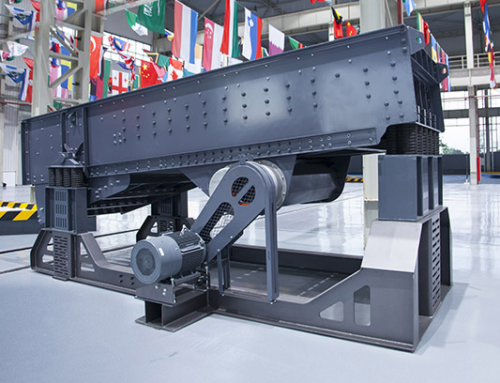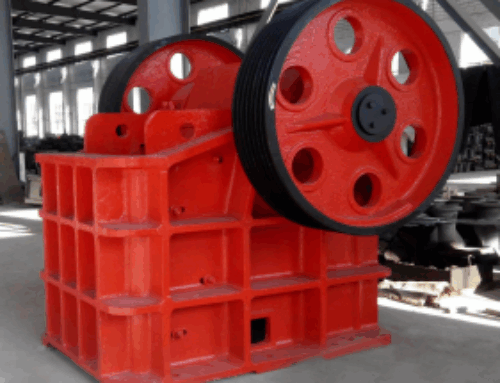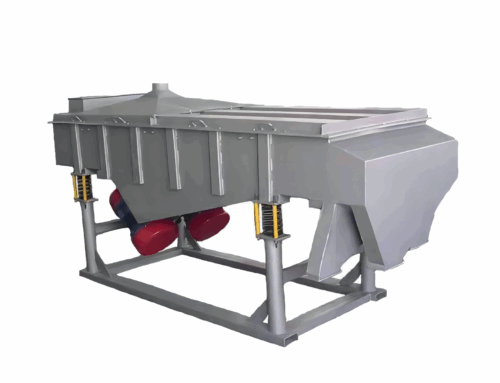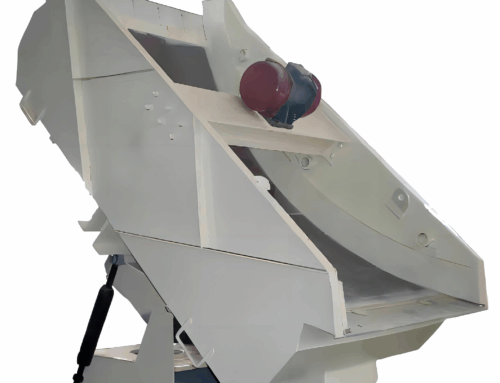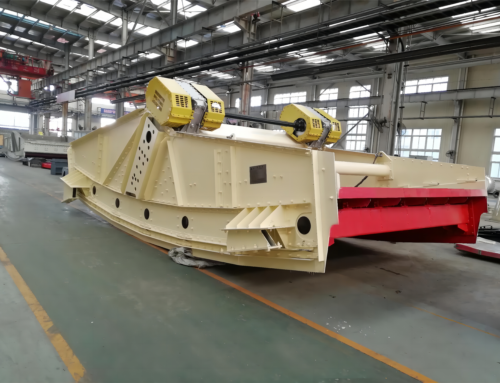一.Importance of the mining process
Ore mining process is of vital significance in resource development and utilisation as well as economic development and other aspects.
From the perspective of resource development and utilisation, a reasonable and advanced mining process is the key to efficiently obtaining ore resources. Although the earth’s mineral resources are abundant, but most of them are buried deep underground or in a complex form in the mine, if there is no suitable mining process, many ores are difficult to be mined out into a usable resource, and through the scientific mining process, can accurately extract the ore body for mining operations, maximise the ore resources to be excavated to enhance the amount of resources to obtain to avoid the waste of resources, to protect all kinds of Industrial production and other demand for ore raw materials.
At the level of economic development, the ore mining industry itself is often one of the pillar industries in many regions, and the level of its mining process directly affects the mining efficiency, cost and final revenue. Efficient mining process can be mined out more quality qualified ore within a unit of time, which will enhance the economic benefits of the entire mining enterprise, but also can lead to the synergistic development of upstream and downstream related industries. For example, the increase in mined ore will stimulate the activity of subsequent industries such as ore dressing and smelting, creating more economic value. At the same time, mining will also stimulate the development of neighbouring service industries such as logistics and transport, equipment maintenance, catering and accommodation, creating a large number of jobs and economic growth points for the region.
In addition, for the entire resource-related industries, the ore mining process is the basis for many subsequent links. Only first through the appropriate mining process to mine the ore from the mine, the subsequent beneficiation of ore enrichment and purification, smelting and extraction of metals and other processes have the implementation of the premise, so it relates to the smooth operation of the entire resource industry chain, is to promote the resource industry healthy, sustainable development of the important guarantee.
二.Classification of mining processes and applicable scenarios
Ore mining process is mainly divided into open pit mining and underground mining and other categories.
Open pit mining is usually applied to the situation where the ore body is thick and large in scale. When the ore body is shallow or even has outcrops on the surface, the open pit mining process is easier to implement and the economic cost is relatively low. In addition, after detailed economic comparisons, when open pit mining is better than underground mining deposits in terms of cost, resource recovery rate and other comprehensive benefits, open pit mining is also preferred. For example, some large open-pit coal mines, open-pit iron ore mines, etc., the ore body is rich in reserves and not deeply buried, the use of open-pit mining can give full play to the advantages of large-scale machinery and equipment, to achieve large-scale, high-efficiency ore extraction operations.
Underground mining is more suitable for the thickness of the ore body, the scale is small and the ore deposits are buried too deep, if the use of open-pit mining needs to excavate a large amount of earth or rock, will lead to a substantial increase in costs, this time underground mining in the economy is more reasonable. There are also when the mine surface needs to protect the vegetation, ecological environment or construction facilities, does not allow large-scale open pit stripping operations, underground mining is a better choice. For example, in some small mines around the city, in order to avoid damage to the city’s ecology and buildings, even if the ore body has a certain depth will be used underground mining process. And from the technical and economic point of view, when the cost of open-pit mining is higher than the cost of underground mining, underground mining should also be chosen. Underground mining in practice requires digging shafts to approach the ore body and extract the ore, such as some precious metal mines or in complex geological conditions of the ore body mining, often need to use the underground mining process to achieve accurate and safe mining operations.
三.Underground mining pioneering methods
1.Shaft development
Shaft development is an important way to enter the underground ore body by drilling shafts. Shafts are usually vertical or near-vertical roadways, and their excavation has strict requirements, based on the specific conditions of the ore body, geological conditions, etc. to determine the appropriate location, depth and diameter and other parameters. Shaft function is very diverse, it is like the underground mining ‘traffic hub’, personnel can use the shaft in the lifting equipment to achieve up and down, equipment can also be transported through the shaft to the underground work area required, mining out of the ore and waste rock can also rely on the shaft to complete the transfer from the underground to the surface of the work.
In the whole process of underground mining, shaft development plays a key role as the foundation and connection. It is the premise of subsequent mining operations, ventilation system laying, drainage system setup and many other links, can make the whole underground mining activities in an orderly manner, to ensure that all aspects of close cooperation, to achieve efficient ore mining work. For example, in some large and medium-sized mines, the shaft development is widely used because of its large lifting capacity, short transport distance, good ventilation conditions and other advantages, providing a strong guarantee for large-scale ore mining.
2.Inclined shaft development
The principle of inclined shaft development is to use the inclined shaft as the main development roadway of the mine, and then establish the connection with the surface and each mining level, and finally form a complete mine production system. The angle of the inclined shaft is set according to the conditions of the ore body and other factors. Generally speaking, when the inclined angle of the shaft is >30°, skips or trolleys are often used for hoisting; when the inclined angle of the shaft is ≤25°~30°, cascade trucks are used for hoisting; and when the inclined angle of the shaft is <18°, a steel-rope belt conveyor is used for transporting.
Compared with vertical shaft development, inclined shaft development has its own characteristics in transport. It can make use of the natural slope to realise the self-slip transport of ore, which can save power to a certain extent. Moreover, the inclined shaft development has the advantages of flexibility and adaptability, which is especially suitable for the gently inclined or inclined ore body below the ground level, and is especially suitable for the mining of small and medium-sized ore bodies that are not too deeply buried. However, there are some shortcomings of inclined shaft development, such as its longer shaft, relatively high maintenance costs, more complex inclined shaft lifting system, the equipment requirements are also higher, and when the inclination angle of the ore body changes greatly, the difficulty of the inclined shaft layout and maintenance will be significantly increased.
四.Common underground mining methods
1.Empty field mining method
(1) Full-scale mining method
The comprehensive mining method is suitable for gently inclined ore bodies that are thin and medium-thick, and where both the ore and the surrounding rocks are solid. In the process of mining back, it will leave the pillar to maintain the empty area, for example, it can leave the poor ore or entrained stone not mining as the pillar, the specification, shape and spacing of the pillar can be flexibly determined according to the stability of the roof plate and the value of the ore, etc., such as the mining of thin precious metal ore body, in order to try to recover the resources, commonly used in the precast concrete block stacks or stacks of waste rock, wood stacks, etc. instead of the pillar.
This kind of mining method has relatively simple back-mining process, less workload in mining alignment and cutting, and under the condition of strict ventilation management with good ventilation, higher production efficiency and lower mining cost. However, it also has certain shortcomings, such as the need to leave ore pillars and not back to mining, the loss of ore will be relatively large, and its exposed surface is large, strict management requirements, or else it is prone to safety hazards, in addition, the working surface of the quarry is large, the burst pile is difficult to focus on, which affects the efficiency of the electric rake.
(2) Room and pillar mining method
Room and pillar mining method is the stage or disc area is divided into mining room and pillar to carry out mining mode, applicable to the surrounding rock and ore solid, different thickness and inclination of the ore body, the scope of application compared to the comprehensive mining method is broader, can be mined back to the thin, thick, very thick ore body. The ore room and pillar will be arranged alternately, leaving continuous or interrupted regular pillars.
The advantage of this method is that the mining and cutting workload is small, the mining process and work organization is simple, easy to use large trackless equipment, can realize mechanized mining, mining room production capacity and labour productivity is relatively high, the working face is well ventilated, the operation is safer, less consumption of pit wood, the direct cost of mining is also relatively low. However, the proportion of ore pillars accounted for a large amount of ore, and generally not recovered, making the high rate of ore loss is its more obvious shortcomings.
(3) Retained ore mining method
Retained ore mining method is commonly used in the ore, the surrounding rock is stable and the ore is not spontaneous combustion and other sharp inclined deposits. It is in accordance with the bottom-up stratified mining operations, the use of ore self-weight release, the mining project is less.
However, if this method is used to mine the ore body above the middle thickness, the loss of ore columns and ore depletion will be relatively large, the workers work under the larger exposure surface, safety is poor, the work of levelling is heavy, it is difficult to realize the mechanisation, and it will accumulate a large amount of ore, which affects the turnover of funds.
2.Avalanche mining method
(1) Single-layer chipping method
The single-layer chipping method is mainly used for mining scenarios with unstable roof rocks, small thickness (generally less than 3m), and gently inclined ore layers. When operating, the ore layer will be divided into ore blocks, and then the ore block mining work advances along the strike according to the full thickness of the ore body. When the back-mining face advances a certain distance, in addition to retaining the space required for the back-mining work, the pillars are systematically recovered and the roof of the mining void area is crumbled, and the crumbled roof rock is used to fill up the mining void area, so as to control the roof pressure.
It is characterised by a relatively simple and flexible structure, but the safety is relatively poor, and there is a certain degree of danger in the work of releasing the roof, as well as a large consumption of wood.
(2) Layered chipping method
Layered chipping method is according to the layering from top to bottom back to the mining block, after each layer of ore mining, above the covered chipped rock down to fill the mining area, and layered back to the mining is carried out under the protection of the artificial false top, the important significance of this is to be able to separate the ore and chipped rock, so as to ensure that the loss of ore and depletion of the minimisation of the loss of ore.
However, this method also has some disadvantages, such as high wood consumption, complex processes, low labour productivity, relatively high cost and less than ideal ventilation conditions, and nowadays it has been gradually replaced by some other efficient mining methods, and the proportion of its application has gradually become smaller.
3.Filling mining method
(1) Single-layer filling mining method
Single-layer filling mining method is suitable for gently inclined and thin ore bodies, and its operation process is to fill the mining void area with hydraulic or cementation after back mining according to the full thickness of the ore body. Through this way, the resources of the ore body can be effectively utilised, and at the same time, the mining empty area can be reasonably treated to reduce the subsequent problems such as ground pressure that may occur.
It can control the loss and depletion of ore to a certain extent, and also has a positive effect on the protection of the surrounding geological environment, and is suitable for application in some mines with high requirements for surface deformation and the need to prevent surface collapse.
(2) Upward layered filling mining method
The upward layered filling mining method will first divide the mining room and pillar, and then horizontally mine back from the bottom to the top and fill up layer by layer. In the mining room, the filling body has an important role in maintaining the surrounding rock of the two gangs, and can also be used as the upper mining platform, convenient for the subsequent mining operations, the mining room is mined to the top, and then fill the roof, and the pillars will be mined back after mining a number of mining room or the whole stage of mining.
This method can effectively improve the ore recovery rate, and at the same time can better control the stability of the quarry, applicable to a variety of ore body conditions, especially those mines that need to take into account the efficiency of ore mining and the treatment of the empty area.
(3) Downward layered filling mining method
The downward stratified filling mining method is mainly used for special ore bodies such as very unstable ore, and its principle is to mine back from the top to the bottom in layers and fill up layer by layer, and each layer of mining is carried out under the protection of the artificial false top of the previous layer. The layers may be horizontal, or at an angle to the level, which facilitates the filling of the direct roof and the handling of the ore, although the rock drilling and support operations are less convenient than in horizontal layers.
Its advantage lies in its ability to safely mine in unstable ore conditions, maximise recovery of high-value ore, minimise ore loss and depletion, and is commonly used to mine non-ferrous or rare metal orebodies with high ore grades or high values.
Ore mining process of intelligent, unmanned trend will be more and more prominent, the mine will gradually achieve less people or even unmanned mining. For example, in underground mining, with the help of robots to perform some dangerous, complex tasks, such as high temperature, high humidity, the presence of toxic and hazardous gases and other harsh environments such as roadway inspection, troubleshooting and repair work can be undertaken by the corresponding function of the mining robot; open-pit mines, unmanned transport trucks, drilling rigs, etc., will also become the norm, they can be in accordance with the set procedures 24 hours a day without interruption! They can operate 24 hours a day in accordance with the set procedures, which not only improves production efficiency, but also avoids the safety hazards brought about by human fatigue and operational errors.

